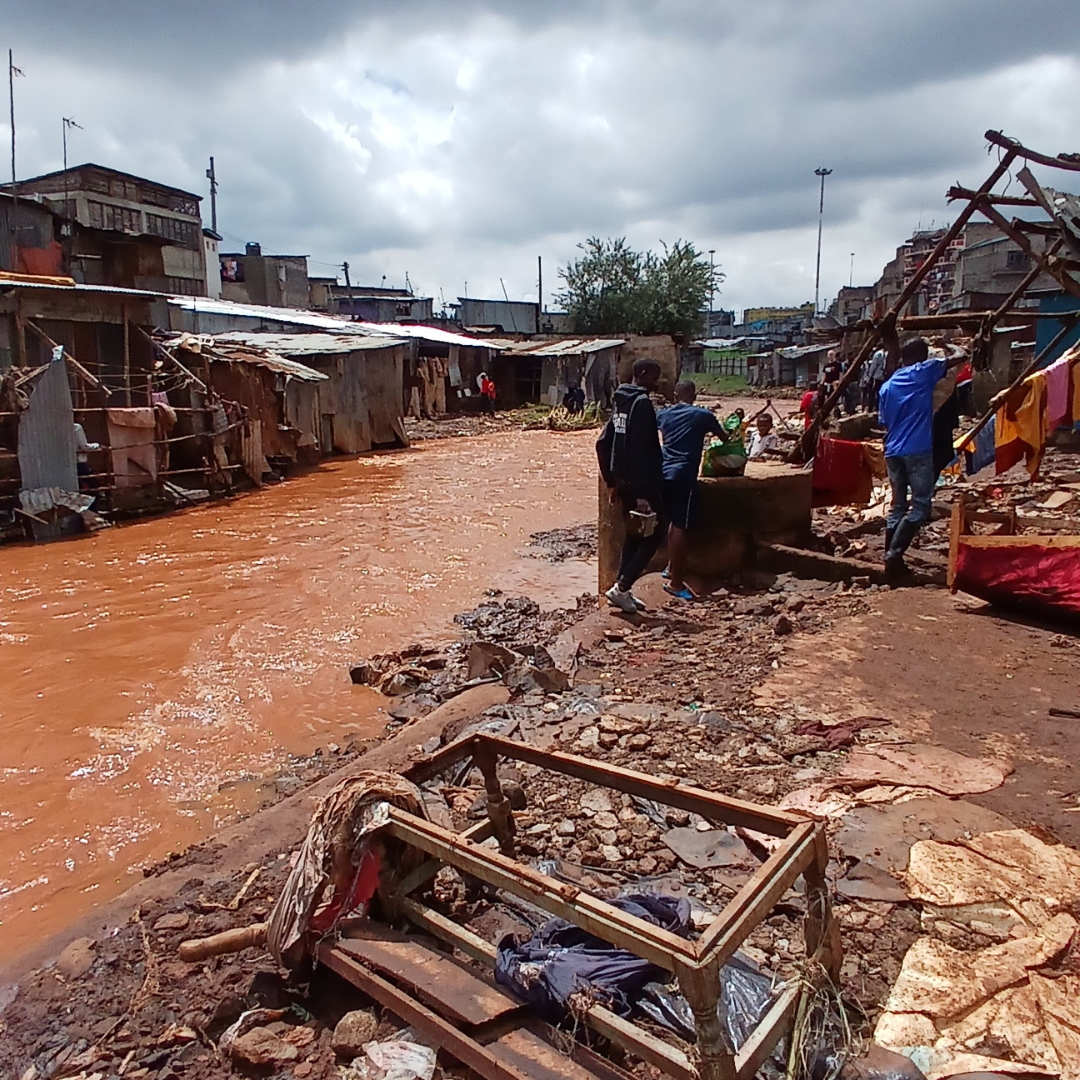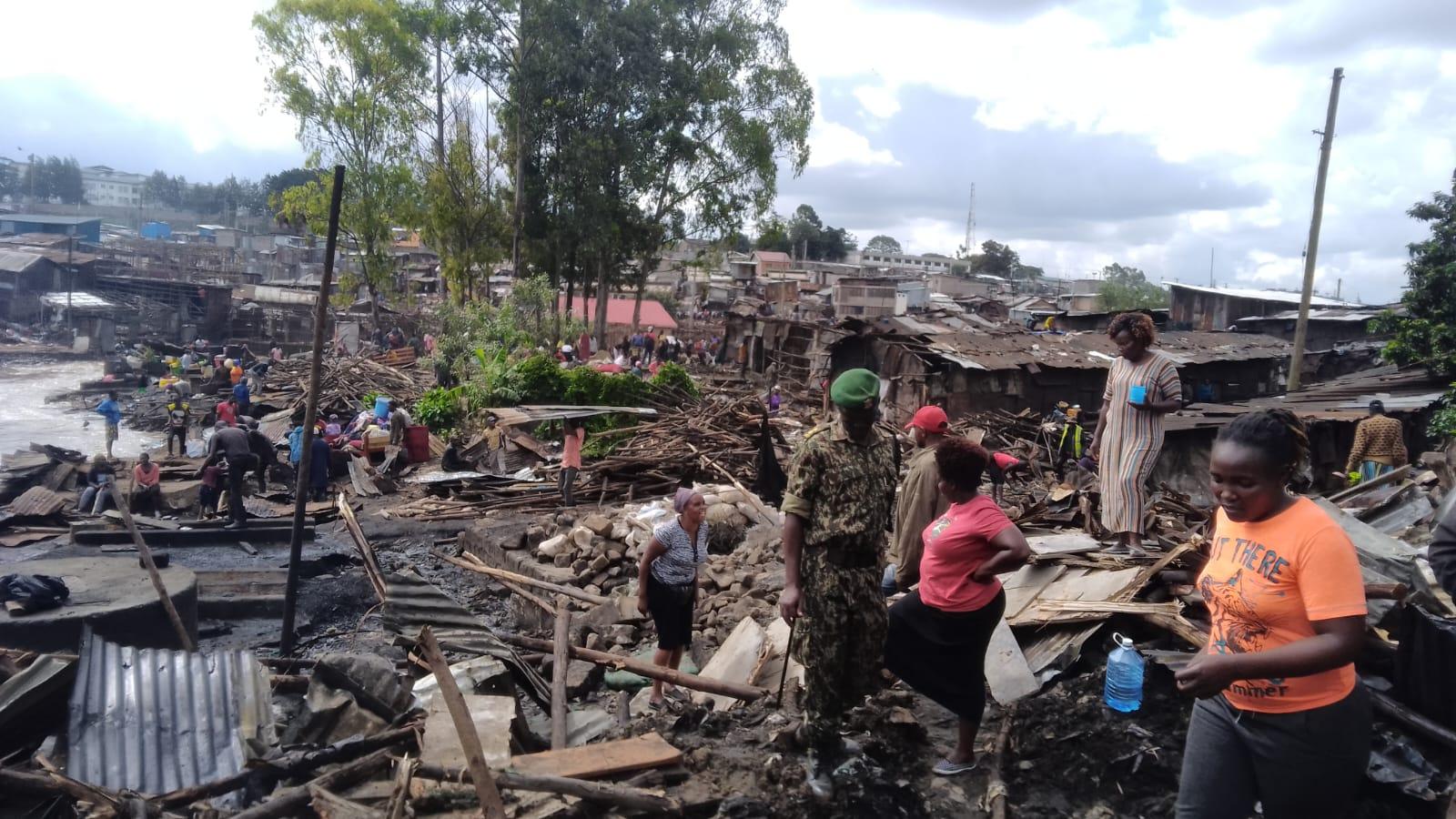Experiencing the Evictions: A First-Hand Account of Displacement in Mathare
Article by Nora Yunes Elafifi

My journey to Nairobi began in the aftermath of the devastating floods that swept through Nairobi’s Mathare area. The death toll had risen to 15, and a relentless search for missing individuals was underway. Notably, despite the president’s promise of aid from the National Youth Service and other government agencies, only local communities were actively involved in these rescue efforts. Adding to the tragedy, reports indicated that over 1,500 learners at Mathare North Primary School faced an uncertain future. Floodwaters had created destruction, destroying classrooms, and learning materials. While top officials, including the president and his deputy, promised government aid, it remained clearly absent. The persistent efforts of local youth, who tirelessly scoured the rivers with nothing but their bare hands. The lack of government intervention, except for police arriving to collect recovered bodies, painted an ugly picture. This, unfortunately, was just the beginning of the story.
Power Dynamics and Broken Promises

Following the disaster, Deputy President Rigathi Gachagua and Nairobi Government spokesperson Isaac Mwaura visited the flood-affected area of Mathare. They assured residents that the government, under President William Samoei Ruto’s leadership, would "do whatever it takes" and dedicate all necessary resources to ensure lives were saved and people protected. Residents were told they would be evacuated from the riverbank by 30 meters for safety reasons, and that they would have time to relocate. However, the following morning, bulldozers arrived, demolishing everything within 60 meters of the riverbank. Left with nowhere to go, residents were forced onto the streets, their homes and livelihoods destroyed by the very government that had promised them support. This experience exemplifies the complex power dynamics at play during disasters. While government officials make public pronouncements, the reality on the ground can be extremely different. Here, the local community’s immediate response contrasted sharply with the delayed and inadequate government intervention. The devastating consequences for residents highlight the urgent need for effective disaster response strategies that prioritize the safety and well-being of the most vulnerable populations.
The Ongoing Evictions from Riparian Land in Nairobi: A Question of Fairness
The Kenyan government’s current program of demolishing structures and relocating residents living on riparian land in Nairobi has raised concerns about equity and fairness. While the stated objective is to mitigate flood risks and landslides, the project’s implementation appears to excessively target informal settlements ("slums") like Mathare, where over 300 families have reportedly been affected. The residents of Mathare express concerns about the resettlement process, with some resorting to temporary solutions like storing belongings on trucks while others seek refuge in government shelters. This urgency contrasts sharply with the situation in Nairobi's upmarket estates. Here, residential buildings constructed on riparian land remain untouched. This apparent variation in enforcement raises questions about the integrity and equal treatment of the eviction process.
While informal settlements bear the effect of these evictions, luxury estates like Gigiri and Runda appear untouched. This difference is evident in Gigiri, where a prestigious hotel built on riparian land now resembles an island surrounded by the streams of the Nairobi River. While the hotel staff navigate the flooded grounds by boat, demolition crews work nearby, apparently constructing a bridge rather than demolishing structures. The comparison of struggling residents in Mathare with seemingly unaffected residents in wealthy areas creates a sense of unequal treatment. The sight of laundry hanging on balconies and children playing in open spaces within these upmarket riparian residences reinforces the perception that the threat of eviction primarily targets residents of informal settlements. This perception undermines the government’s stated aim of non-discriminatory action and fuels concerns about the project’s fairness.
People tried to save whatever they could

Following the devastating floods and subsequent forced evictions in Nairobi, a deep sense of hopelessness and loss has gripped Mathare residents. Witnessing their homes demolished after barely escaping the floodwaters left many feeling like they had reached their lowest point. A resident who lost her home in the eviction, reflects here feelings: "The water came so fast... Now I have nothing. How are we supposed to start over?"
The government’s early promises of assistance now seem empty to the displaced citizens. The demolitions feel like a harsh twist of the knife rather than a way out. Another resident expresses the frustration: "The government promised to help us rebuild, but all they’ve done is tear down our homes." The lack of proper relocation plans leaves residents questioning their future and scrambling to rebuild shattered lives. These evictions go beyond the loss of physical structures; they represent the uprooting of a community. Elders, who have seen the repeated nature of floods, understand the need for safety measures. However, they express a deep sense of betrayal at the government’s heavy-handed approach.
The misery in Mathare is a simple reminder of the human cost of unchecked disasters and poorly planned responses. Residents’ voices paint a picture of broken promises, shattered dreams, and a desire for a more equitable solution. Their stories serve as a powerful call to action, pushing authorities to prioritize the well-being of vulnerable communities and ensure a just and sustainable path to recovery.
About Nora Yunes Elafifi
As a master’s student in Urban Management and Development (UMD 20) at the Institute of Housing and Urban Development Studies (IHS) at Erasmus University Rotterdam, my research focuses on forced evictions in Nairobi, Kenya. In May 2024, I had the opportunity to visit Mathare, a Nairobi neighbourhood significantly impacted by recent floods and subsequent evictions. This blog will share my firsthand observations of the aftermath and the experiences of local residents and NGOs.
